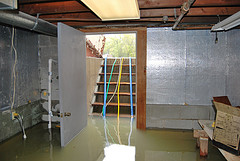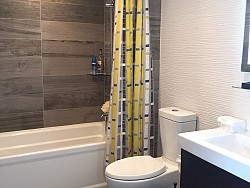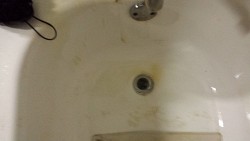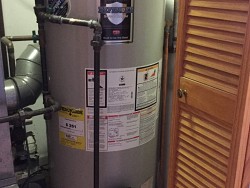Sump Pump: Install, Maintain and Troubleshoot
 It’s good to know that your sump pump is there when you need it, even if that may be only once every ten years. In case of flood, a sump pump will get the unwanted water out of your basement – which is important in order to protect valuables and sentimental items in your downstairs storage room, office, or living space. Even more crucial, removing the water will protect the integrity of your home’s foundation.
It’s good to know that your sump pump is there when you need it, even if that may be only once every ten years. In case of flood, a sump pump will get the unwanted water out of your basement – which is important in order to protect valuables and sentimental items in your downstairs storage room, office, or living space. Even more crucial, removing the water will protect the integrity of your home’s foundation.
Purchase and Installation
Choose between a standard sump pump and a grinder pump. The former gets rid of water that floods into your basement from the foundation drain tile, while the latter grinds up sewage and pumps it into your main sewer line.
Have a battery-powered backup on hand in case of electric failure. The battery should be replaced every 2-3 years.
Check performance data to find out the maximum lift – normally it’s 10 feet. The maximum flow rate is also important; it should be at least 35 gallons per minute. Horsepower of 1/3 is usual.
Proper installation, precisely following the manufacturer’s recommendations, is essential for safe and efficient operation. Have a qualified plumber install a sump pump with its own grounded 15A electrical circuit and a surge protector. The lifespan of this device varies a great deal. However with correct installation and maintenance, your sump pump is not likely to need replacement for 10-15 years.
Don’t rely on the sump pump alone – you must also waterproof the area. Seal all cracks and crevices in your home’s foundation.
Maintenance and Testing
To make sure that your sump pump will be functional in case emergency strikes, inspect it every few weeks. Turn off electric power to the pump and then use a flashlight to check that its inlet is not blocked with dirt, debris, or even small animals. A professional plumber can clear a sump pump clog out for you, clean the sump pit, and, if desired, install a grate covering the inlet to prevent this type of problem in future.
Every 2-3 months, test that the pump is operating correctly by pouring 5 gallons of tap water into it. Should it fail to start up, ensure that your pump is connected to the power system and reset the circuit when necessary. If the electricity is not the trouble, or the unit is running but not succeeding in pumping the water, you’ll know that a sump pump repair is called for.
Troubleshooting
Problems that indicate your sump pump needs repair or replacement include the following:
Noise. A noisy pump could be due to any one of a number of factors. It may be humming because of a broken impeller blade, necessitating a blade replacement. Alternatively, a slurping noise may be because the pump cycle lasts too long, with the result that it ends up sucking air; adjust the float switch. A rattling sound usually stems from the discharge pipe banging against wall or floor joists. Insulation is a good solution.
Stuck float switch. A float switch which is jammed, clogged, or tangled in the system may stay stuck in the “on” position, causing the pump to run even when it is not required. Repair the switch to fix the problem.
Inadequately sized pump. A pump which is too small will run much more frequently. Upgrade to ½ HP.
Inadequately sized liner. When the pump removes water faster than the liner fills, this discrepancy causes the pump to rapidly switch on and off, wearing out the motor and wasting electricity. Replace the liner with a larger size.
Frozen discharge pipe. The discharge pipe should be installed at a pitch. This will allow water to drain out, eliminating buildup and freezing in cold weather.
Laura Firszt writes for networx.com.
Looking for a Pro? Call us (866) 441-6648

Plumbing Average Costs
Plumbers Experiences

Thoroughly Modern Bathroom Remodel

Clearing A Bathtub Drain Makes It Run Smoother Than Ever



